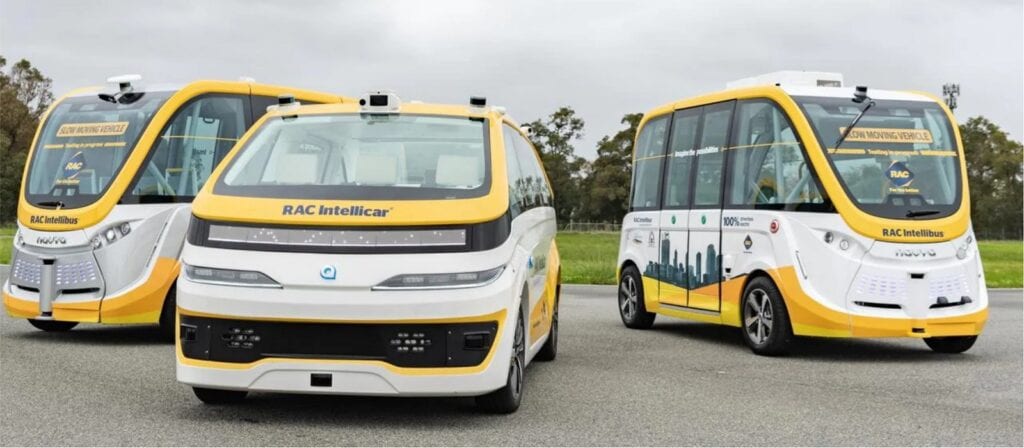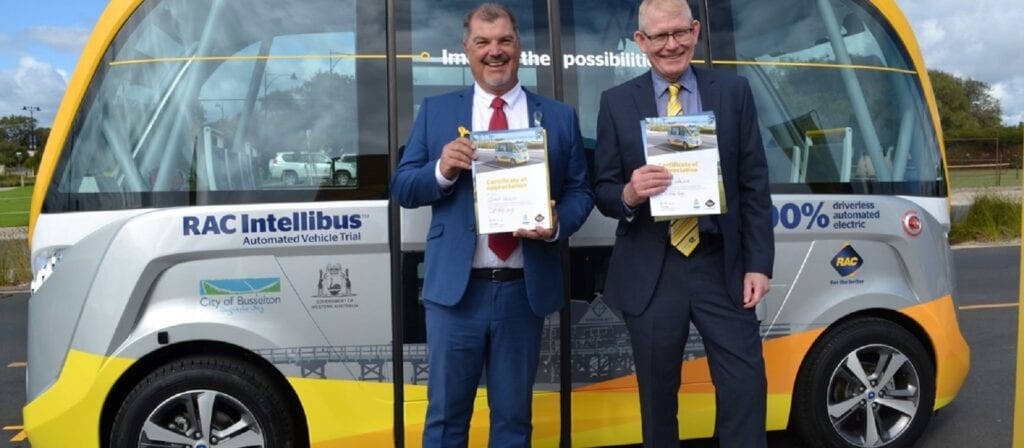Driverless and fully electric vehicles are set to arrive in Western Australia under RAC’s continued plan to trial automated vehicles, making Perth the first city in Australia – and among the very first in the world – to test and experience this type of service.
ICMIF member RAC, in partnership with NAVYA and the State Government, will test several driverless passenger ‘AUTONOM’ vehicles which have been designed as an on-demand shared mobility service, bookable through a smartphone app.
RAC Group CEO Terry Agnew said this trial will be a significant advancement on the already ground-breaking technology in the two RAC Intellibuses, making Australians some of the first people in the world to experience the very latest in automated vehicle technology.
“We must prepare for the potential impact and opportunities of driverless vehicles, as well as the changes that are required for them to safely transition on to our roads,” Mr Agnew said.
“For 112 years, RAC has been helping to create a better WA for its members and the community. By giving Western Australians the chance to see the technology, use it and experience it, we are learning more and working towards being ready for driverless vehicles.”
Perth is one of the first three cities globally announced as having access to these first-production vehicles, which have been developed by NAVYA – the manufacturer of the two RAC driverless shuttle buses, currently being trialled in South Perth.
“Autonomous features like cruise control and lane detection are already available, with the industry indicating that fully driverless vehicles are now just years away, rather than a few decades,” Mr Agnew said.
“Increasing levels of automation in vehicles are an inevitable part of the future, and the notion of them being in widespread use on our roads is not a question of if, but when.
“RAC recognises that in order to adapt to new technologies, we must start preparing a roadmap of changes by way of trials to determine what will need to occur for automated vehicles to safely transition on to our roads.”
The vehicles can carry up to six passengers each, and have a maximum operating speed of 90km/hr with a likely recommended operating speed of 20 to 50km/h during the trial.
The vehicles are fitted with the latest state-of-the-art multi-sensor technology, including 10 LIDARS, four radars, six cameras and Odometry, all providing the vehicles with 3D perception that allows them to map the environment, detect obstacles and make decisions which allow them to operate autonomously. The cars also feature two Global Navigation Satellite System (GNSS) antennae to determine the precise position of the vehicle at any given time, and are linked to a supervision service.
The trial, which will involve a number of stages, will take place next year with the vehicles expected to arrive in Perth in April 2018.
“Australia is a strategic place to test, showcase and deploy new technologies in the region. The governments’, as well as RAC’s, enthusiasm for new vehicle technology, innovation and our need to make smart mobility solutions readily available to the community in this part of the world has led us to confirm one of our trials here in Western Australia” said NAVYA CEO, Christophe Sapet.
The details of the trial are currently in development and RAC is working through the necessary approval processes with Government. Further information will be announced in coming months.
RAC anticipates that this first step will lead to further trials, research and collaboration, which will all increase Australia’s preparation and understanding of how driverless vehicles can be integrated in to our transport system; and ultimately, how the technology will affect the way in which our almost one million members and the broader community move around the State of Western Australia.
Shaun Tarbuck, Chief Executive of ICMIF said: “This is an exciting collaboration between our member RAC and technology company NAVYA and we look forward to hearing more on how the trials go and how this technology could benefit RAC members and the much wider public. It is interesting to see the focus that RAC is putting on testing this type of automated technology in the hope that driverless vehicles will help have the potential to save lives and stop serious injuries on roads given that so many accidents are down to human error”.






